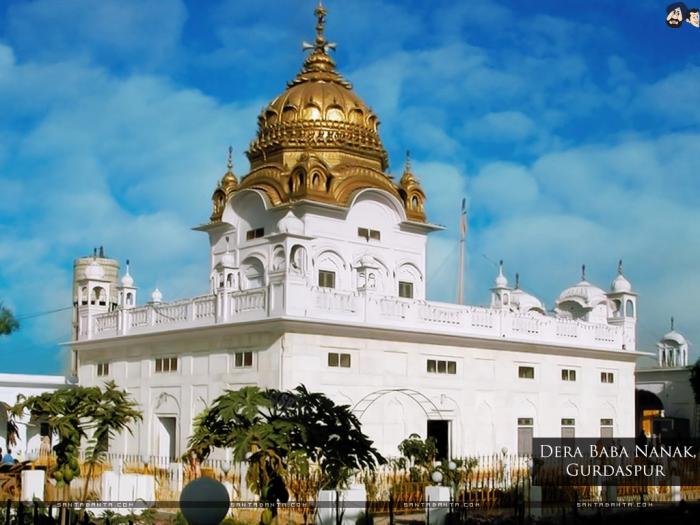
Manager Contact Number: 01871-247592
Address: Dera Baba Nanak, Gurdaspur, Punjab, India
Guru Nanak came here after his first udasi (tour) on December 1515 AD to see his family. His wife Mata Sulakhani and his two sons Sri Chand and Lakhmi Chand had come to stay here in their maternal home at Pakhoke Dera Baba Nanak, near Dera Baba Nanak, where Lala Mool Raj, father–in–law of Guru Nanak was working as Patwari. At that time this village was situated across the river Ravi.
During the 1800's, Maharaja Ranjit Singh provided a copper gilded throne to the Gurdwara and got its canopy covered with marble. The Gurdwara is in the centre of the town and comprises three separate memorials.
A well which originally belonged to Bhai Ajita still exists and is reverently called Sarji Sahib. Some people drink its water in the belief that it possesses curative properties.
The second memorial is the 'Kirtan Asthan', a rectangular hall, which marks the site where Sri Guru Arjan Sahib Ji had sat rapt in Kirtan when visiting Dera Baba Nanak for condolence on the death of Baba Dharam Das. The Guru Granth Sahib is seated in this hall.
The final memorial is the central Gurdwara, called Thara Sahib. This marks the 'Thara' or platform, on which Guru Nanak had sat when he first came to Ajita's well and where, later, Sri Chand buried his father's ashes. The Guru Granth Sahib is seated here in a small square pavilion with a pinnacled lotus dome under an overhanging gilded canopy. The whole pavilion is covered with gold-plated metal sheets with some of the hymns of Guru Nanak embossed on them.
The Thara Sahib is at one end of a recently constructed spacious hall, above which, over the sanctum, is a square domed room with an ornamental arched coping and domed kiosks at the corners. The entire exterior above the roof level of this room is covered with gold-plated metal sheets. The goldwork on top as well as on the sanctum was carried in 1827 by Maharaja Ranjit Singh, who also made endowments in cash and land for the maintenance of the Gurdwara.
The Gurdwara is administered by the Shiromani Gurdwara Parbandhak Committee through a local committee. Special divans take place on every amavasya, the last day of the dark half of the lunar month, and all major anniversaries, especially the one marking Guru Nanak's re-joining with God, are observed. But the most important annual event is the fair celebrating the Vaisakhi festival.
A handwritten copy of the Guru Granth Sahib is preserved in this Gurdwara. It has 1660 pages, each page having a handsomely illuminated border.